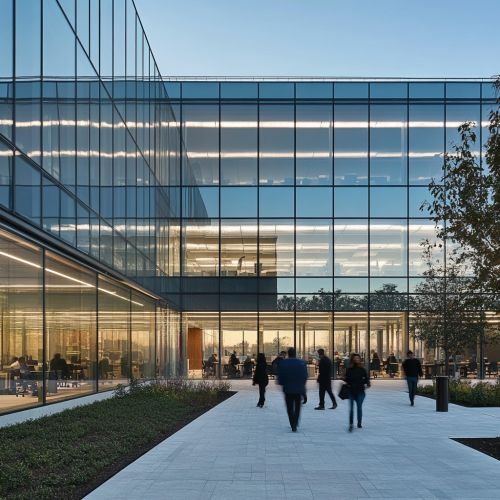H1B Visa Policy
Introduction
The H1B visa is a non-immigrant visa that allows U.S. companies to employ foreign workers in specialty occupations that require theoretical or technical expertise. It is a critical component of the United States' immigration policy, particularly in sectors such as information technology, engineering, and healthcare. This article delves into the intricacies of the H1B visa policy, examining its historical evolution, legal framework, application process, and its impact on the U.S. labor market and foreign workers.
Historical Background
The H1B visa was established under the Immigration and Nationality Act of 1965, which aimed to address the growing demand for skilled labor in the United States. Over the decades, the policy has undergone numerous amendments to adapt to the changing economic landscape and labor market needs. The Immigration Act of 1990 was a significant milestone, as it introduced the concept of specialty occupations and set an annual cap on the number of H1B visas issued.
Legal Framework
The H1B visa policy is governed by a complex legal framework that involves multiple federal agencies, including the United States Citizenship and Immigration Services (USCIS), the Department of Labor (DOL), and the Department of State. The USCIS is responsible for processing H1B petitions, while the DOL ensures that employers comply with labor condition application requirements. The Department of State issues the actual visa to applicants outside the United States.
Specialty Occupations
A specialty occupation is defined as one that requires the application of a body of highly specialized knowledge and the attainment of a bachelor's degree or higher in a specific field. Common fields include computer science, engineering, mathematics, and healthcare. The definition of specialty occupations has been a subject of debate and litigation, with courts often interpreting the term in various ways.
Labor Condition Application
Before filing an H1B petition, employers must submit a Labor Condition Application (LCA) to the DOL. The LCA ensures that the employment of an H1B worker will not adversely affect the wages and working conditions of U.S. workers. Employers must attest to paying the prevailing wage, providing working conditions that do not adversely affect other employees, and notifying employees of the intent to hire an H1B worker.
Application Process
The H1B visa application process is intricate and involves several steps. Employers must first determine the eligibility of the position and the candidate. Once eligibility is established, the employer files an LCA with the DOL. Upon approval, the employer submits Form I-129, Petition for a Nonimmigrant Worker, to the USCIS. If the petition is approved, the foreign worker can apply for the H1B visa at a U.S. consulate or embassy.
Cap and Lottery System
The H1B visa is subject to an annual cap, which is currently set at 65,000 visas, with an additional 20,000 visas available for individuals with a master's degree or higher from a U.S. institution. Due to high demand, the USCIS conducts a lottery to randomly select petitions for processing. This lottery system has been a point of contention, with critics arguing that it does not adequately prioritize the most qualified candidates.
Premium Processing
To expedite the processing of H1B petitions, employers can opt for premium processing, which guarantees a decision within 15 calendar days for an additional fee. This option is particularly beneficial for employers with urgent hiring needs or for candidates who require a swift transition to the United States.
Impact on the U.S. Labor Market
The H1B visa program has a significant impact on the U.S. labor market, particularly in the technology sector. Proponents argue that it addresses skill shortages and fosters innovation by allowing U.S. companies to access a global talent pool. Critics, however, contend that it can lead to wage suppression and displacement of U.S. workers.
Economic Contributions
H1B workers contribute to the U.S. economy by filling critical skill gaps, enhancing productivity, and driving technological advancements. Studies have shown that H1B workers are often employed in high-paying jobs and contribute significantly to tax revenues and social security.
Wage and Employment Effects
The impact of the H1B visa on wages and employment has been a contentious issue. Some studies suggest that the influx of H1B workers can lead to wage suppression in certain sectors, while others argue that the overall effect on wages is minimal. The displacement of U.S. workers is another concern, although evidence on this issue is mixed.
Challenges and Controversies
The H1B visa policy has faced numerous challenges and controversies over the years. Issues such as visa fraud, exploitation of H1B workers, and the impact on domestic employment have sparked debates and led to calls for reform.
Visa Fraud and Abuse
Visa fraud and abuse have been persistent issues within the H1B program. Some employers have been accused of misrepresenting job positions or underpaying H1B workers. The USCIS and DOL have implemented measures to combat fraud, including increased audits and site visits.
Policy Reforms
In response to criticisms, several policy reforms have been proposed and implemented to enhance the integrity of the H1B program. These include stricter eligibility criteria, increased scrutiny of petitions, and measures to prioritize higher-skilled workers.
Future of the H1B Visa Program
The future of the H1B visa program remains uncertain, as it is subject to ongoing policy debates and potential legislative changes. Factors such as economic conditions, labor market needs, and political climate will likely influence the direction of the program.
Technological Advancements
As technology continues to evolve, the demand for skilled workers in fields such as artificial intelligence, cybersecurity, and data science is expected to grow. The H1B visa program will play a crucial role in meeting this demand and maintaining the United States' competitive edge in the global economy.
Legislative Proposals
Several legislative proposals have been introduced to reform the H1B visa program. These proposals aim to address issues such as the lottery system, wage requirements, and the definition of specialty occupations. The outcome of these proposals will shape the future landscape of the H1B visa policy.


Conclusion
The H1B visa policy is a vital component of the United States' immigration and labor market strategy. It enables U.S. companies to access a global talent pool and address skill shortages in critical sectors. However, the program also faces challenges and controversies that necessitate ongoing evaluation and reform. As the global economy continues to evolve, the H1B visa policy will remain a key area of focus for policymakers, employers, and foreign workers alike.
